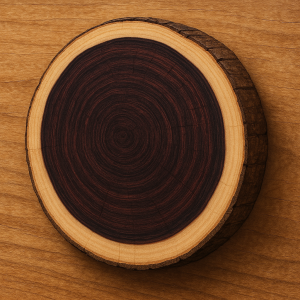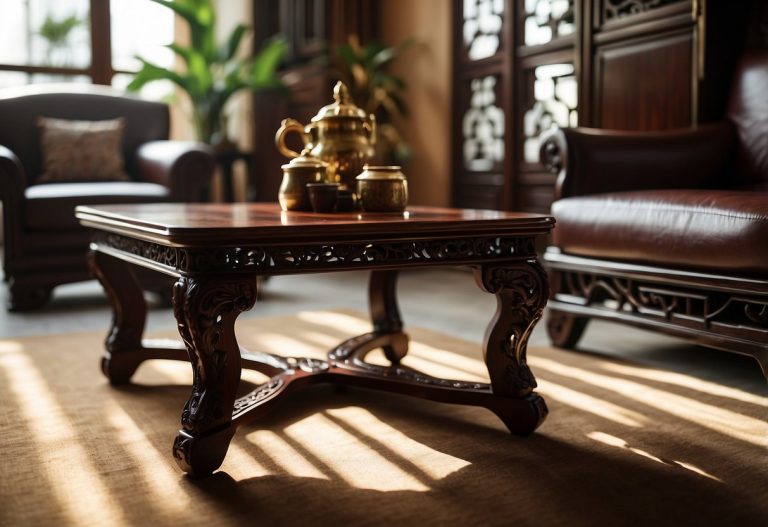Among the world’s most coveted hardwoods, Indian rosewood (Dalbergia latifolia) stands out for its luxurious appearance, exceptional durability, and cultural prestige. Grown predominantly in the Western Ghats, a biodiversity hotspot stretching across Karnataka, Kerala, and Tamil Nadu, this timber is not just a material—it’s a legacy. Its exclusivity, rich hues, and versatile applications make it exotic and a prized asset in both domestic and international markets. Rosewood timber ages gracefully, darkening over time to a rich, chocolatey hue.
How does rosewood look like?
Famous for its colour and therefore application is luxury furniture and artisan, rosewood timber looks depend on where it is sourced from. In the Indian market, it is commonly referred to as Seeshum wood however it is a large and blatant representation of the valuable wood due to some vendors and major brands not fully knowing what a true rosewood looks like and only treating it from a product sales lens.
Typically, Rosewood timber looks range from dark golden brown to deep purple (almost like beetroot) with dark streaks. This colour comes from the heartwood, which is the solid timber that is milled from a rosewood log. The outer part, which is the sap wood is pale yellow or white. The rings of the timber (heartwood) are darker proportionally to the age of the timber, i.e longer the age, darker the streaks.
| Indian Rosewood (Western Ghats/Karnataka) | Kerala Rosewood | Central India Rosewood | Other parts of north (eastern) India |
|---|---|---|---|
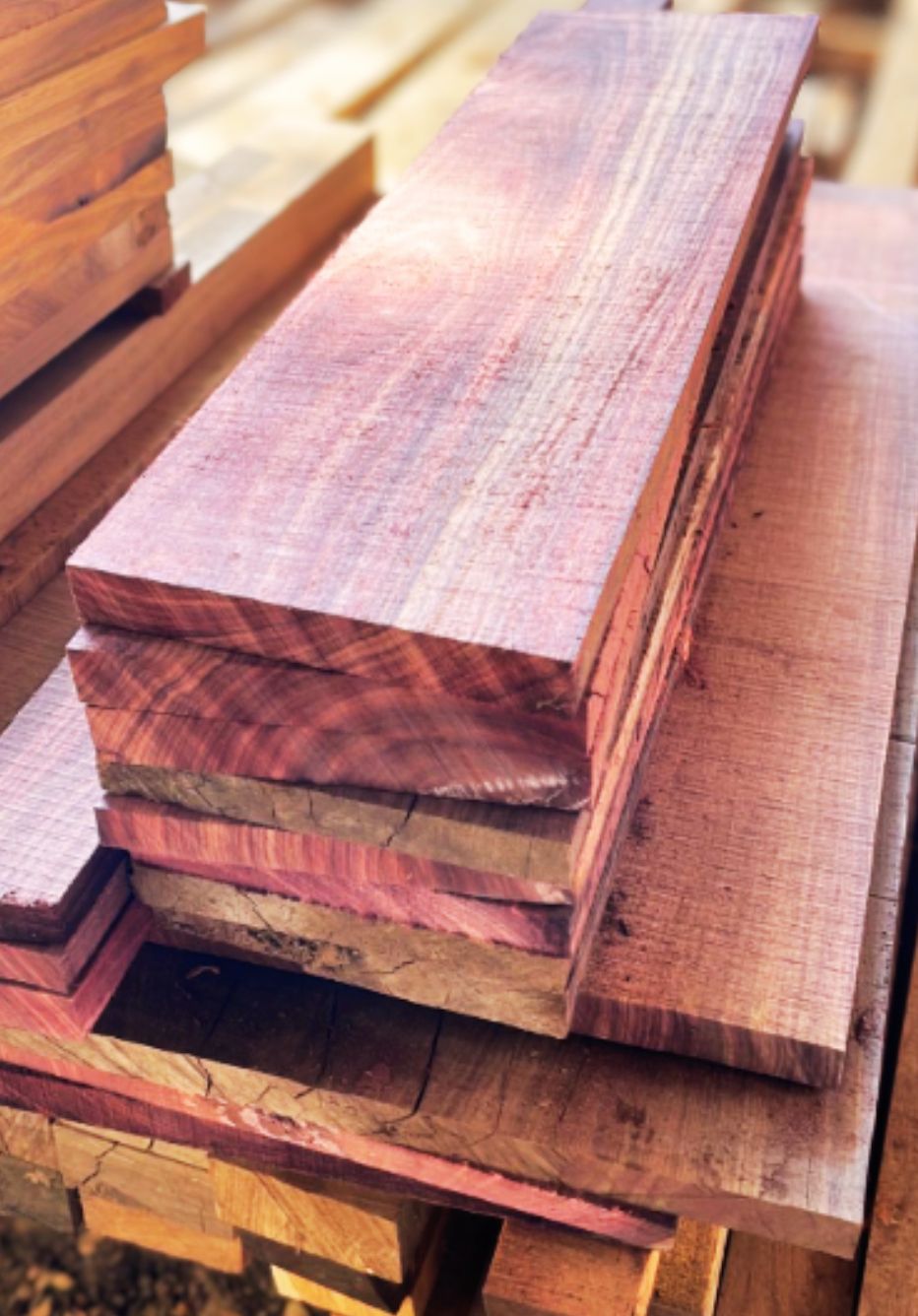 | 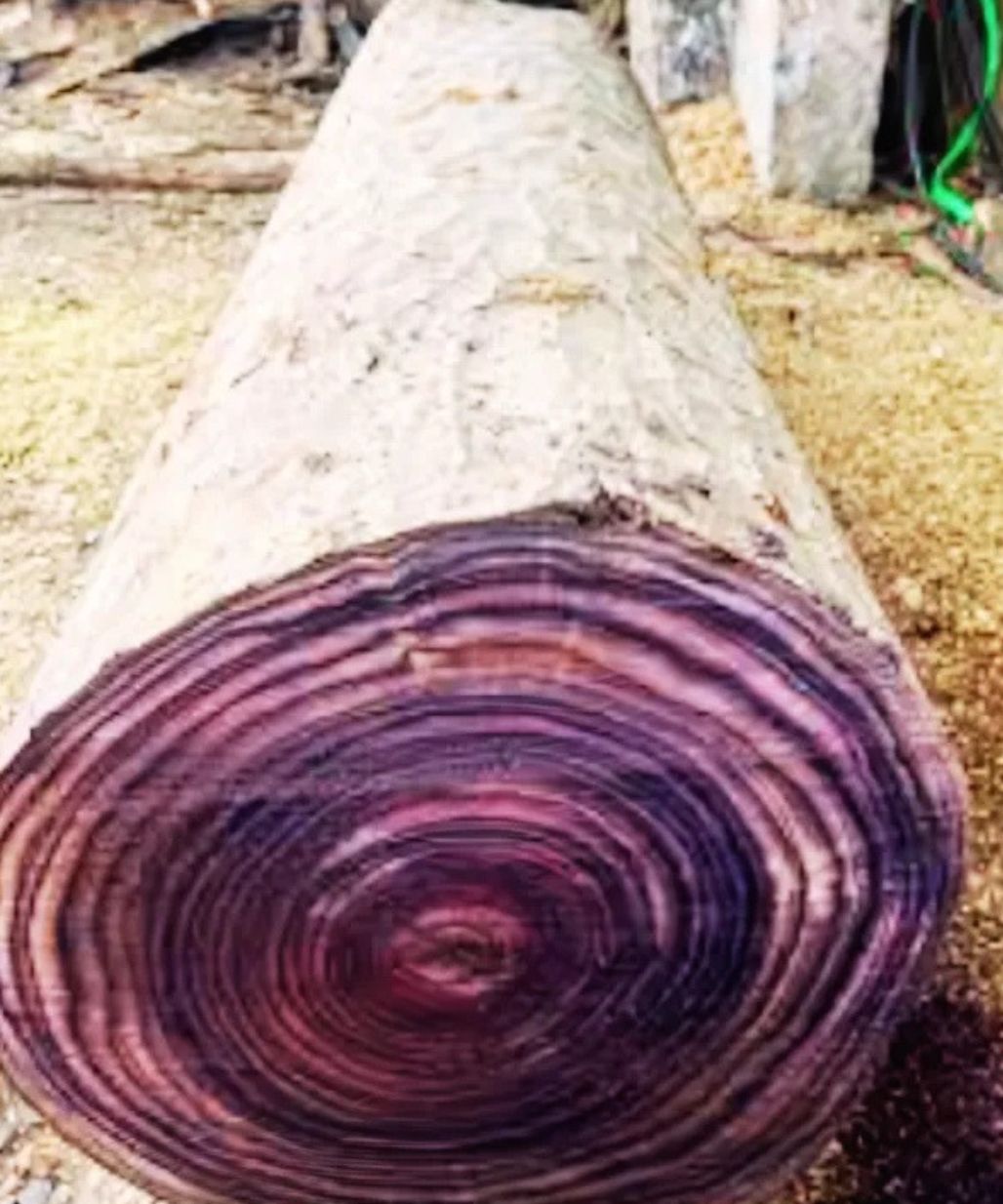 | 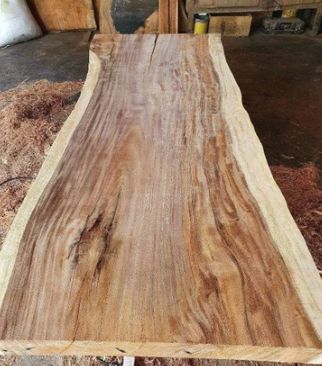 | 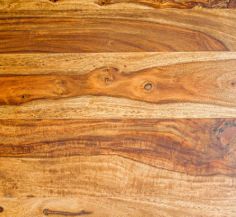 |
From the above images you’ll notice there is a stark difference in colour of ‘rosewood’ based on its place of growth. Karnataka & Kerala look very similar due to the similarity in region, climate and soil. These rosewoods are the top of the class, which are the true ‘Dalbergia Latifolia’. The difference between Karnataka and Kerala rosewood is that in Karnataka, you can only obtain them from sustainably managed forests from the government as there is no plantation. In Kerala though, there are plantations of rosewood and not necessarily managed sustainably as part of agroforestry in the state.
Central & Northeastern Indian ‘rosewood’ are much lighter in colour with similar wavy grains, this is ‘Dalbbergia Sisoo’ (hence why the common name ‘Sisuu’ or ‘Seesum’ or ‘Sheeshum’. Grains and streaks are interlocked, which means the milled log and processed cut size (or plank) would not have straight streaks, it will be wavy and smooth, which looks lustrous on surface and gorgeous when polished. Glossy finish is most preferred and even engravements or carvings to further enhance luxury and beauty.
Here’s a quick comparison
| Feature | Karnataka Rosewood (Western Ghats) | Kerala Rosewood | Central/Eastern India | Imported Rosewood |
|---|---|---|---|---|
| Scientific Name | Dalbergia Latifolia | Dalbergia Latifolia | Dalbergia Sisoo | Varies |
| Colour | Deep purplish-brown | Reddish to purplish-black | Light to medium brown | Reddish, dark brown, or black |
| Grain | Fine, interlocked | Deep, glossy | Straight, less figured | Varies: dramatic in Brazilian |
| Density | Very high | High | Moderate | High (varies by species) |
| Workability | Excellent | Excellent | High | Varies |
| Regions | Coorg, Chickmagalur, Shimoga | Wayanad, Idukki, Nilambur | Maharashtra, MP, Chattisgarh, Odisha, Bihar, Jharkhand | Brazil, Northern Africa |
| Sustainability | High & Regulated | Artisan-led (with agroforestry) | Medium-Low (Plantation forestry) | Regulated, often controversial |
| Application | Luxury furniture, instruments | Carvings, heritage decor | Utility furniture | Guitars, veneers, luxury interiors |
Where can you use rosewood timber?
Rosewood is widely used for utility furniture to high end interiors, some common applications are
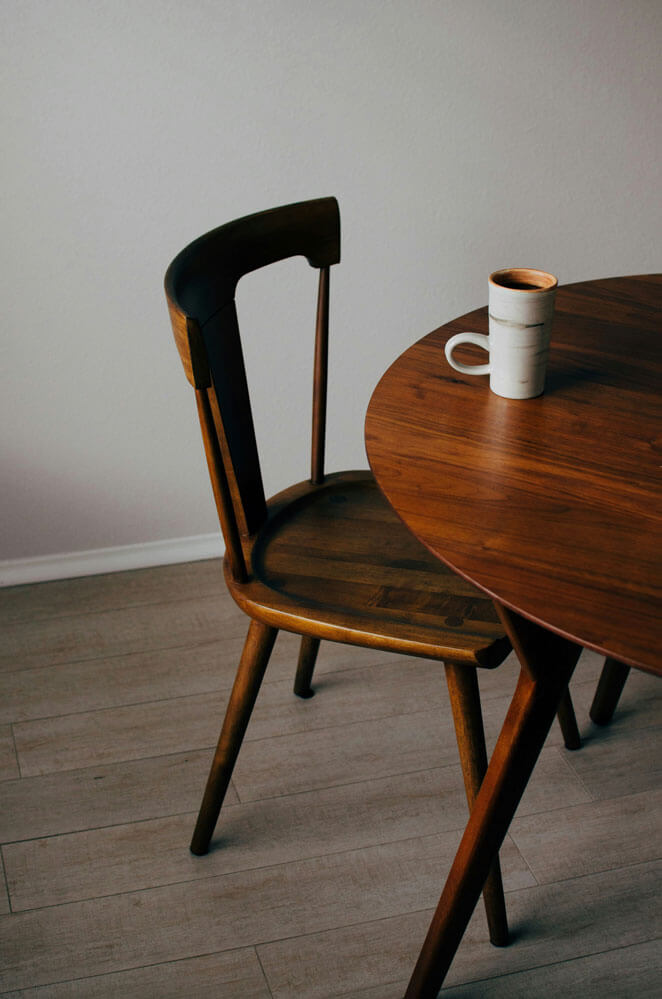
Luxury Furniture: Rosewood is a staple in heirloom-quality furniture. Its hardness and resistance to wear make it ideal for: Dining tables, cabinets, bed frames, desks and chairs. The wood’s natural polish and grain eliminate the need for heavy finishes, allowing artisans to highlight its organic beauty.
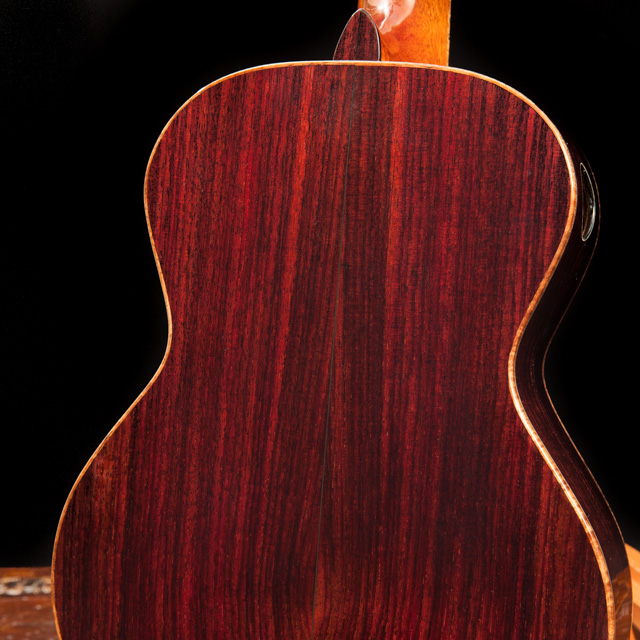
Musical Instruments, Its tonal richness and resonance make rosewood a preferred choice for Guitar fretboards and backs, Sitar and veena bodies, Piano keys and violin bows.
Musicians value its ability to produce warm, balanced tones with excellent sustain.
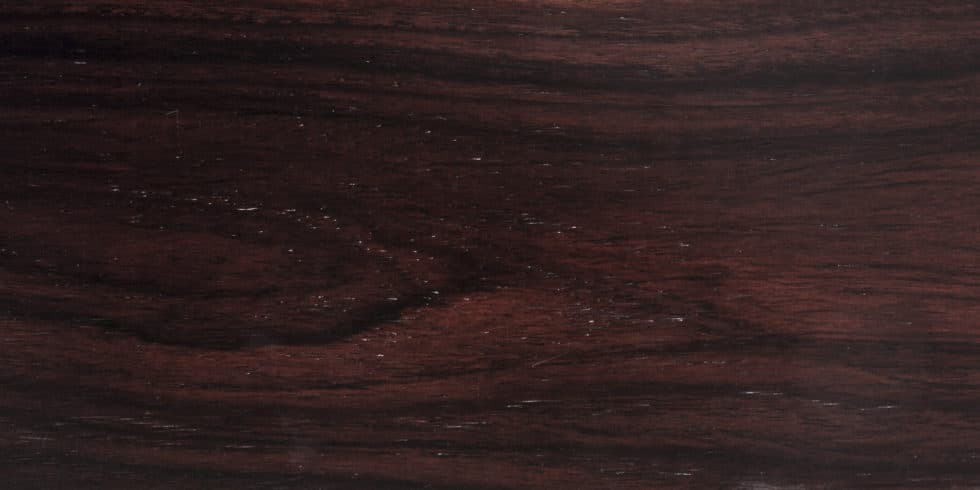
Decorative Veneers and Inlays, thin slices of rosewood are used as veneers for luxury interiors, paneling, and cabinetry. Inlay work, especially in Mysore and Coorg, showcases intricate patterns using rosewood against lighter woods or ivory.
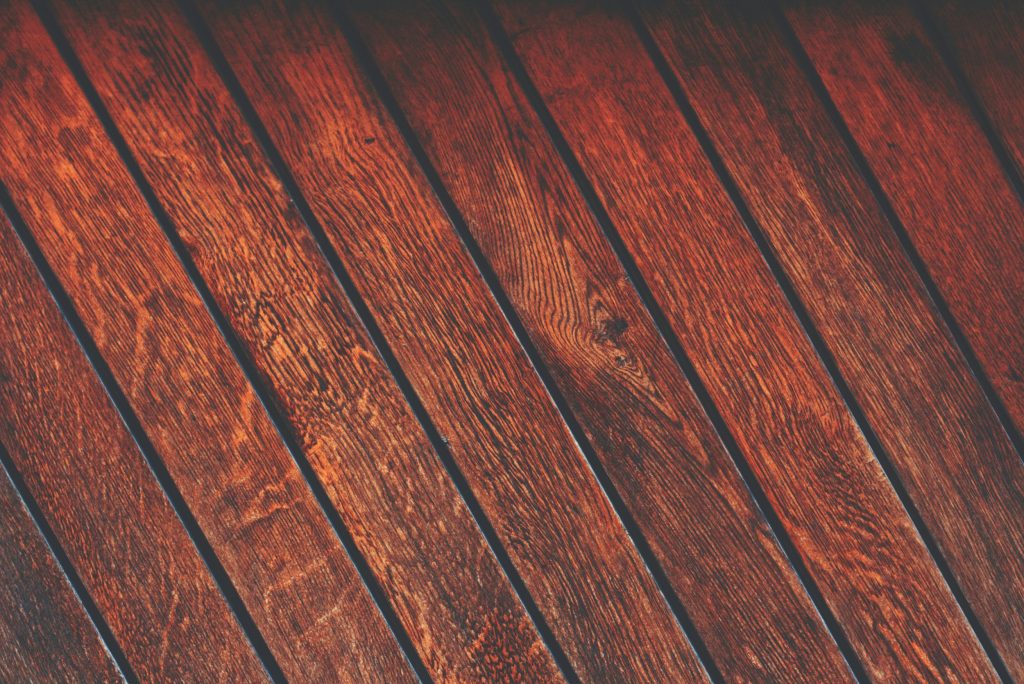
Flooring and Panelling, Its durability and termite resistance make it suitable for premium flooring, especially in heritage homes and boutique hotels.
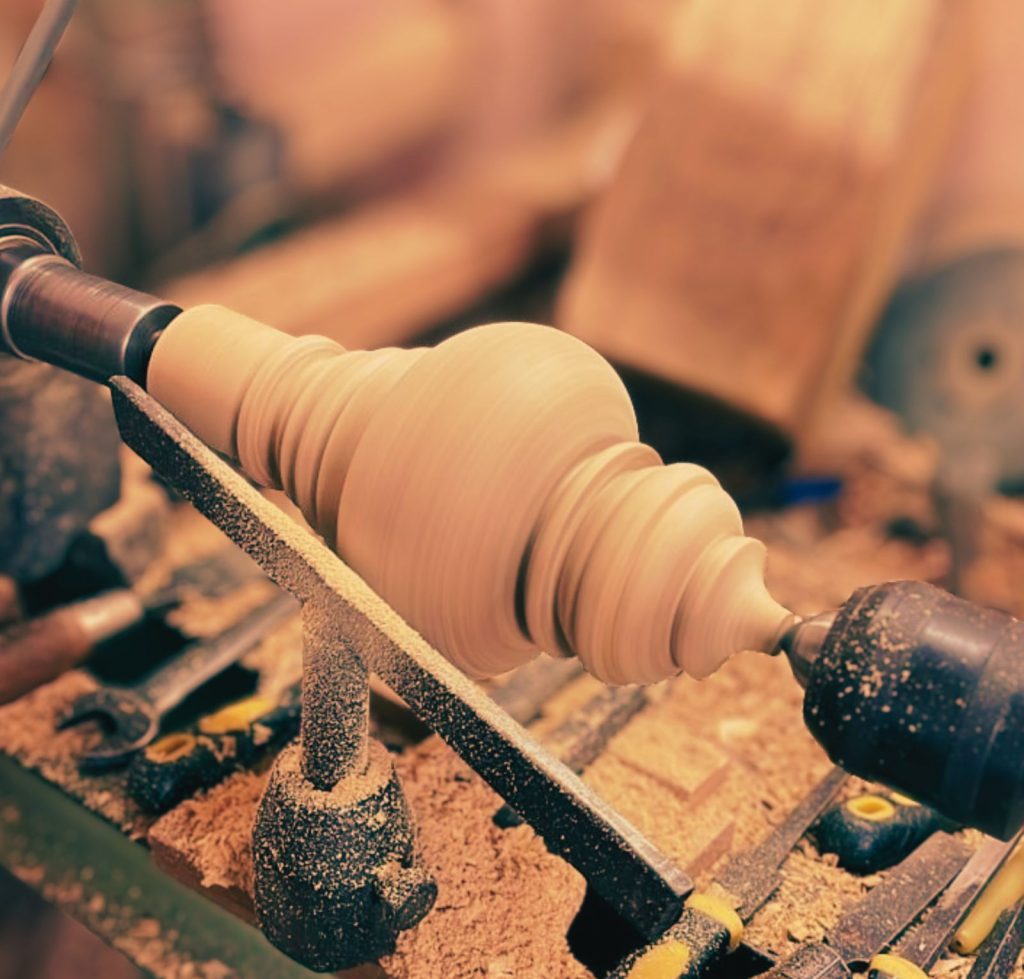
Turning and Carvings, Rosewood’s workability allows for fine detailing, making it ideal for sculptures, handcrafted boxes, ornamental columns and toys.
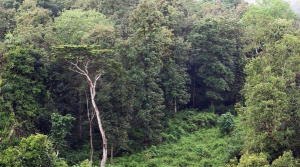
Exclusivity of Western Ghats Rosewood
The Western Ghats provide the perfect ecological cradle for rosewood. The region’s high rainfall, fertile soil, and moderate climate contribute to the slow, dense growth of the trees, which can take 60 to 80 years to mature. This slow maturation results in a tight grain structure and high density, making the timber exceptionally strong and durable.
What makes rosewood from this region exclusive?
- Limited natural habitat: It grows only in select forest belts, especially in Karnataka’s Coorg and Chikmagalur regions.
- What makes rosewood from this region exclusive?
- Limited natural habitat: It grows only in select forest belts, especially in Karnataka’s Coorg and Chikmagalur regions.
- Strict regulation: Harvesting is controlled by government auctions, ensuring legal and sustainable sourcing.
- Low yield: Only about 40% of a log is usable timber due to thick sapwood and natural defects
- This combination of rarity, regulation, and ecological specificity makes Western Ghats rosewood a timber of distinction.
Rosewood timber from the Western Ghats is not just a material—it’s a symbol of India’s natural wealth and artisanal heritage. Its exclusive origin, rich colour, and unmatched versatility make it a favourite among connoisseurs, craftsmen, and collectors alike.
Whether it graces a concert hall as part of a grand piano, adorns a royal suite as a carved bedpost, or lines the walls of a luxury villa, rosewood continues to embody timeless beauty and enduring strength.
Processing Rosewood & Yield
Processing rosewood is a labour-intensive and low-yield operation, involves meticulous and resource-intensive workflow due to its density, grain structure, and legal restrictions.
The process begins with selective harvesting from government-managed forests or private plantations, where mature trees—often aged between 60 to 80 years—are legally felled under strict permits. Once harvested, the logs are debarked, sized, and inspected for quality. Seasoning is a critical step, as fresh logs contain 35–45% moisture; they are either air-dried over several months or kiln-dried to reduce moisture to 8–12%, preventing warping and cracking. Sawing and milling follow, but only about 40% of the log yields usable timber due to thick sapwood and natural defects like knots and spiral grain. The remaining 60% is considered waste, though some offcuts are repurposed for smaller items or fuel. The usable timber is then planed, sanded, and polished to reveal its natural sheen, often without the need for staining due to its inherent beauty.
Despite its excellent workability and resistance to decay, rosewood’s hardness demands specialized tools, and its interlocked grain can pose challenges during machining.
Cost & Marketing Value
Rosewood is among the most expensive timbers in India. Its price is influenced by:
- • Place of origin
- • Grain quality
- • Colour
- • Log size and maturity
- • log volume and yield
- • Calcium contents
- • Demand and auction dynamics
Prices Range from ₹6,500 to ₹15,000 per cubic foot for premium-grade rosewood. Lower grades or smaller logs may start around ₹4,500 per cubic foot This pricing reflects not just the wood’s quality, but also the cost of legal procurement, seasoning, and transportation from remote forest areas.
| Indian Rosewood (Western Ghats/Karnataka) | Kerala Rosewood | Central/Eastern Rosewood | Imported Rosewood |
|---|---|---|---|
| ₹6,500 to ₹15,000* | ₹5000 to ₹10,000* | ₹3000 to ₹6000* | ₹4,500 to ₹7,000* |
*Price range for a guide only. Does not represent actual pricing. Relevant and valid for 2025.
Durability & Logevity of Rosewood
With proper care, rosewood pieces can last anywhere from 50 to over 100 years, making them ideal for heirloom-quality furnishings. This longevity is largely due to the wood’s dense structure, which resists wear, warping, and cracking over time. Its natural oils offer built-in protection against termites, fungal decay, and moisture, reducing the need for chemical treatments or frequent maintenance. Aesthetically, rosewood ages gracefully, with its rich purplish-brown tones deepening over time to a warm, chocolate hue. This natural evolution enhances its beauty, making older pieces even more desirable. The wood’s fine grain and smooth texture also allow for excellent finishing, often requiring minimal polishing to maintain its lustre.
Craftsmanship plays a key role in its longevity. Rosewood furniture is typically handcrafted with strong joinery and attention to detail, ensuring structural integrity for decades. Maintenance is simple—regular dusting and occasional polishing are usually sufficient. Avoiding prolonged exposure to direct sunlight and excessive humidity helps preserve its finish and prevent surface damage.
How to care for rosewood furniture?
Caring for rosewood furniture is remarkably simple, thanks to the wood’s natural resilience and rich composition. Due to its density and natural oils, rosewood resists termites, decay, and moisture, making it ideal for long-lasting furniture that requires only minimalist upkeep.
Regular dusting with a soft, dry cloth is usually sufficient to maintain its surface. For occasional deeper cleaning, a slightly damp cloth followed by a dry wipe will do the job—no need for harsh chemicals or abrasive cleaners.
Rosewood’s natural sheen means it rarely needs polishing, but a light application of high-quality furniture wax every few months can enhance its luster. To preserve its color and prevent fading, it’s best to keep rosewood furniture out of direct sunlight and away from sources of heat or humidity.
Using coasters, placemats, and felt pads under objects helps prevent scratches and stains, while cleaning spills promptly avoids surface damage. Unlike more delicate woods, rosewood doesn’t demand constant attention; its strength and beauty endure with minimal effort. With just a few simple habits, rosewood furniture can remain stunning and structurally sound for generations.
Does Rosewood furniture value appreciate over time?
Yes! The value of rosewood furniture, particularly that made from Dalbergia latifolia, often appreciates over time, especially when the piece is well-crafted, well-maintained, and made from high-quality timber.
Unlike mass-produced furniture made from engineered wood or softwoods, rosewood furniture is typically handcrafted, using dense, richly grained hardwood that is both structurally resilient and visually stunning. Its natural resistance to termites, decay, and moisture means that it can last for generations with minimal maintenance, making it a desirable asset for collectors and homeowners alike.
As rosewood matures, its colour deepens and develops a rich patina, enhancing its aesthetic appeal and uniqueness—qualities that are highly valued in antique and vintage markets. Furthermore, due to strict regulations under CITES (Convention on International Trade in Endangered Species), the harvesting and export of rosewood are tightly controlled, which has significantly reduced its availability in the global market. This scarcity has led to increased demand for existing pieces, especially those with provenance or historical significance. While poorly maintained or mass-produced rosewood furniture may depreciate, high-quality pieces—particularly those with artisanal craftsmanship—tend to retain or even increase in value over time. As sustainable, natural materials continue to gain popularity, rosewood furniture is increasingly seen not just as a functional item, but as a long-term investment in beauty, heritage, and craftsmanship.
To ensure your rosewood furniture retains its value, focus on minimalist care and preservation. Regularly dust with a soft cloth and occasionally apply a light furniture wax to maintain its natural sheen. Keep it away from direct sunlight and humidity fluctuations to prevent fading or warping. Avoid harsh cleaners and protect surfaces with coasters or pads. Preserve any documentation or provenance, especially for antique or handcrafted pieces, and avoid modifications that alter its original design. Periodic professional appraisals can help track its market value. With simple, consistent care, rosewood furniture can remain a valuable and timeless asset for generations.
Looking for Rosewood Timber or Bespoke Hand Made Furniture?
Simple, fill in the form below and we’ll be in touch to help you with your Rosewood curiosity!

